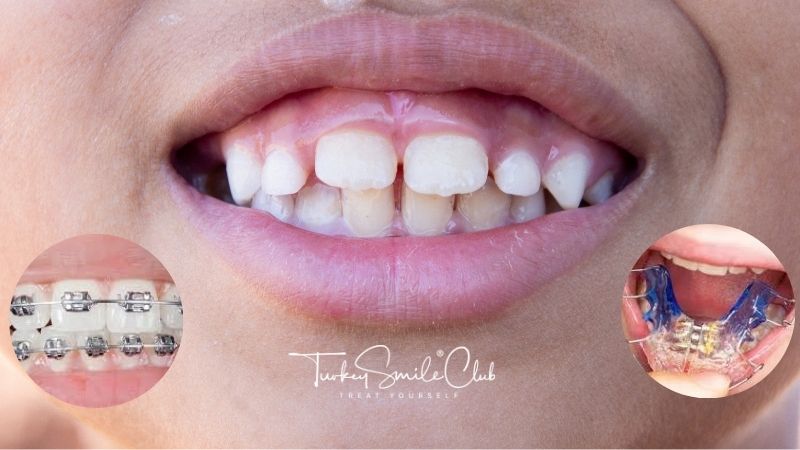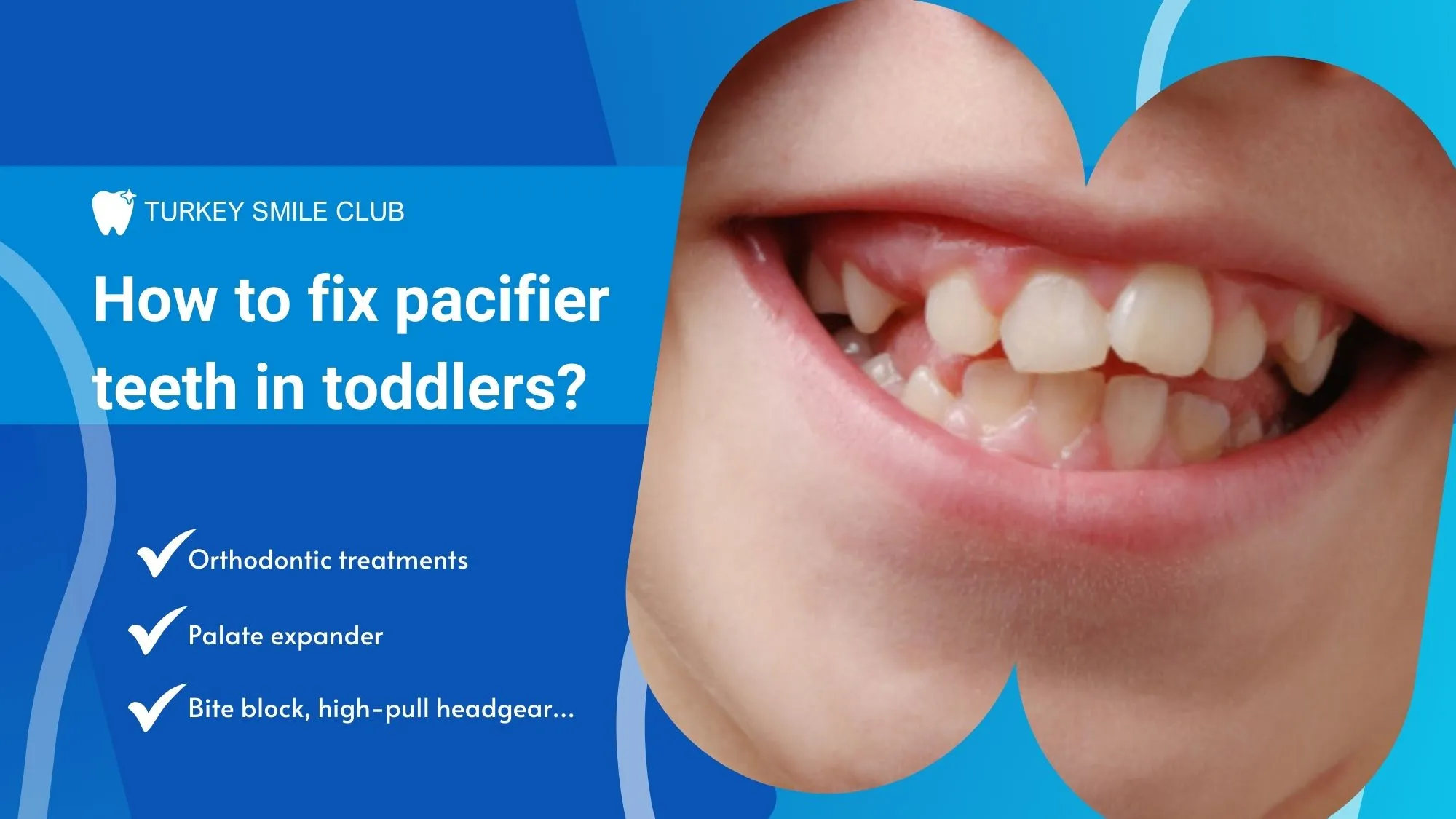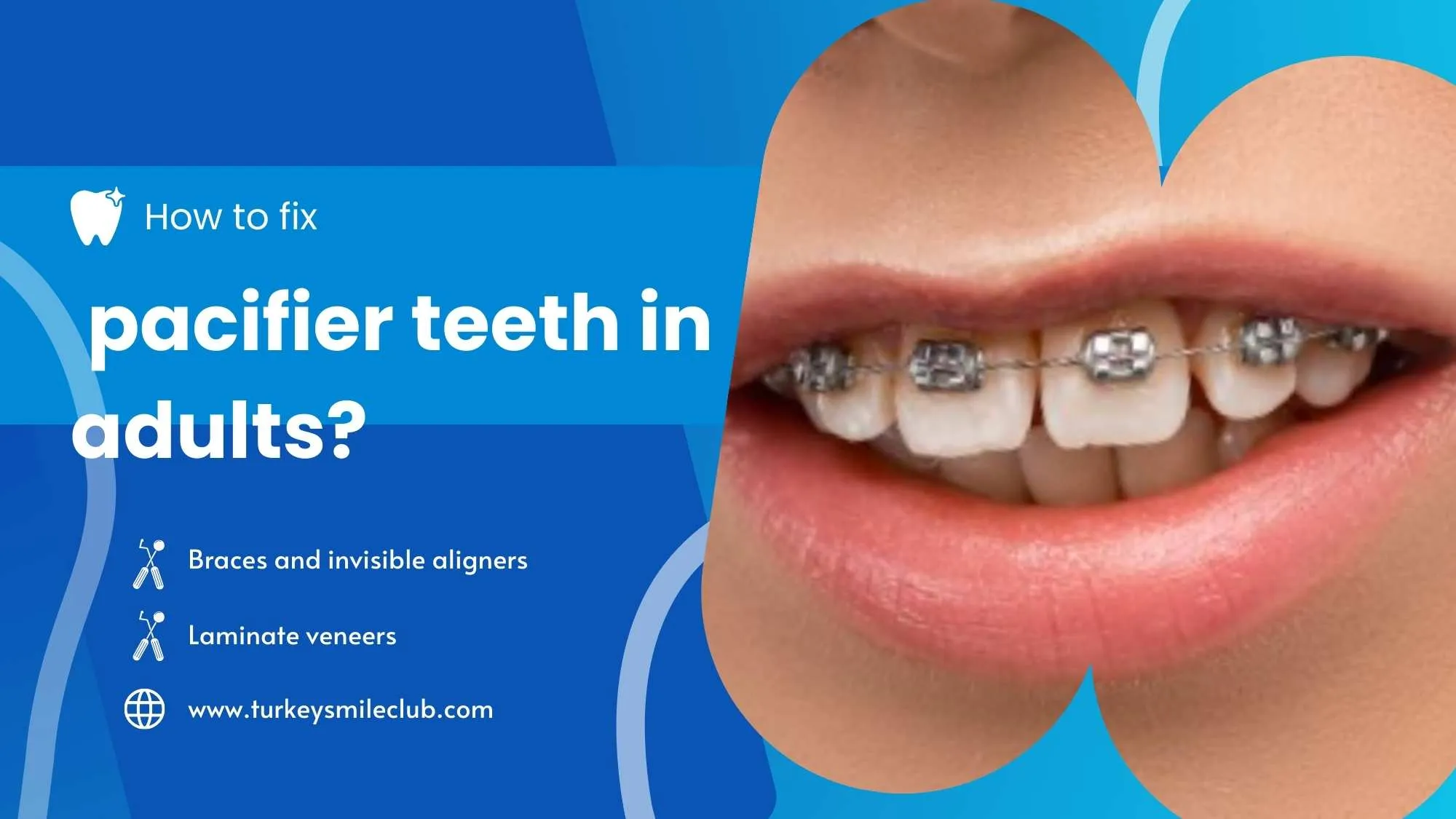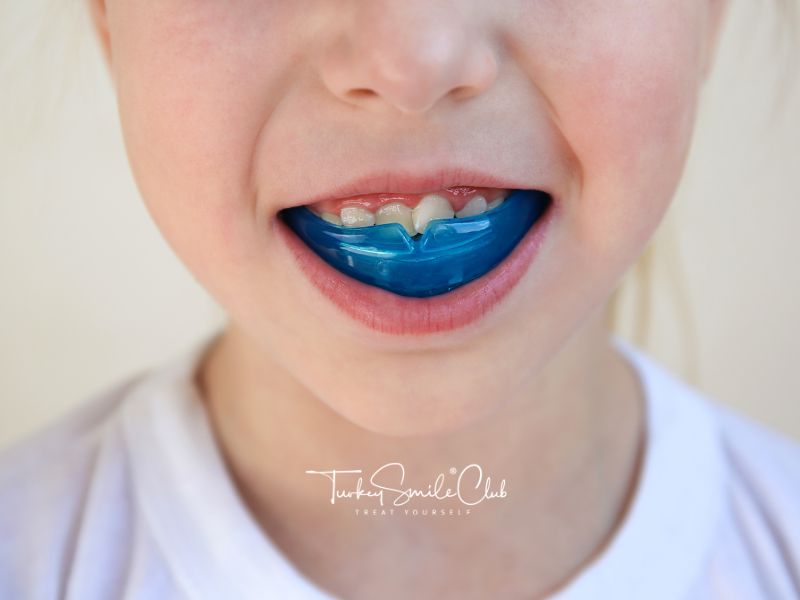
How to fix pacifier teeth: Causes, Precautions, Treatments
How to fix pacifier teeth: Causes, Precautions, Treatments
Pacifier teeth are caused by long-term and unconscious use of pacifiers or finger sucking habits.
Parents support the use of pacifiers because it calms their babies and children and allows them to fall asleep comfortably. When this situation is not used consciously, it causes a dental problem called pacifier teeth or buck teeth.
In the blog post ‘How to fix pacifier teeth?’ we will discuss how you can solve this problem and what you can do to prevent pacifier teeth.
What are pacifier teeth?
Pacifier teeth refers to dental problems caused by long-term use of a pacifier. These problems often occur in infants and young children who use a pacifier for a long time, beyond the recommended age. Major dental problems include misaligned teeth, overbites, crooked teeth, and even cavities. Pacifier teeth can be prevented and treated if intervened early.
If dental problems caused by long-term tumb sucking or taking a pacifier are noticed, an orthodontic specialist should be consulted. Since the development of young children and infants is not yet complete, the jaw and tooth structure can easily change. Therefore, if molocclusions are recognised early, your dentist can treat your child in a short time with painless and painless methods. Dental treatments that are long-lasting and complex for adults can be easier for children.
How to fix pacifier teeth?
Patients with pacifier teeth or buck teeth problems experience self-confidence problems and aesthetic problems when they are children and young people. The good news for younger patients is that the treatments are shorter and simpler. For adults, although a little longer orthodontic treatments are required, it is worth it to see the result.
How to fix pacifier teeth in toddlers?

Since toddlers are in the developmental stage, it is easier to solve dental problems. As they grow older, it takes longer time and can become more complex.
Treatment methods for pacifier teeth in childhood:
1.Orthodontic appliances:
Your dentist may recommend orthodontic treatments such as spacers or palate expanders to correct misaligned teeth. In young children who have stopped using a pacifier and have dental problems, these tools bring the teeth into the correct position.
2.Palate expander
A palatal expander is an orthodontic appliance used to widen the upper jaw (palate) in children and teenagers. This device helps to create more space in the mouth, ensuring the correct alignment of the teeth and reducing crowding. The appliance gradually widens the palate by applying gentle pressure.
Other orthodontic treatments are bite blocks, retainers, high-pull headgear, and vertical pull chin cups, etc.
3.Tongue crib
Tongue Cribs reduce the pressure on the palate by preventing the tongue from pushing against the palate. A few months of use is usually sufficient.
4.Braces
Although the approach of children to dental braces is not very warm, today, this approach is abandoned with more aesthetic and fun braces, and even looks cute. It is possible to get rid of the pacifier teeth problem by providing a more aesthetic appearance with coloured braces or ceramic braces.
How to fix pacifier teeth in adults?

Nowadays, adults also want to solve dental problems caused by pacifier teeth from childhood due to the fact that people attach more importance to their appearance and aesthetic concerns. Here are these treatment methods:
1. Braces and invisible aligners
With the Invisalign technique, patients can be easily treated without aesthetic discomfort and frequent dental check-ups.
Braces are also an effective method for aligning teeth. It is perfect for more complex tooth alignment problems and is one of the most effective treatments.
2. Veneers
Laminate veneer treatment does not solve the problems in the palate structure of the patient, nor does it solve the alignment problems in the teeth. However, it allows the teeth to appear in the same alignment aesthetically. A long-lasting solution is provided for patients with aesthetic concerns.
Will pacifier teeth correct themselves?
No, a pacifier tooth is not a dental problem that can be corrected on its own. However, the earlier the intervention, the faster the treatment can be carried out.
How can pacifiers affect the teeth?
In long-term use of pacifiers, the teeth and jaw structures of babies and children can easily deteriorate because their jaw structures are still soft. By disrupting the dental arch on which the teeth are located, it causes the formation of a narrow palate structure, the prominence of the upper jaw, and dental disorders such as cross-bite. The pacifier should not be kept in the mouth continuously, it should be given only when necessary and should be suitable for the age of the baby.
Some dental problems that may occur as a result of finger sucking and pacifier use:
Cavities
Applying sweet foods so that babies get used to the use of pacifiers or not cleaning the pacifier sufficiently causes tartar and caries formation in their teeth.
Overbites
The upper front teeth protrude prominently forward and close over the lower teeth. This is called overbite. During pacifier and finger sucking, the upper front teeth are pushed forward.
Buck teeth
Bucket teeth, also known as protruding teeth, occur when the front teeth protrude significantly. Prolonged use of a pacifier forces the upper teeth outward, leading to this condition.
Parents wonder whether buck teeth will correct themselves or whether they will require orthodontic intervention.

Are pacifiers good or bad?
The use of pacifiers facilitates babies to relax, calm down, and transition to sleep. However, it is important to pay attention to the cleanliness of the pacifier and to leave the pacifier in childhood. Otherwise, it may be impossible to avoid dental problems.
It can cause not only pacifier teeth but also speech disorders due to pacifier teeth. This can negatively affect children’s self-confidence.
According to the general opinion of doctors, the pacifier can only be good if it is used for its intended purpose and up to a maximum of two years of age, as long as this period is extended, pacifier teeth – buck teeth and other problems arise.
How do I choose the right pacifier?
When the correct pacifier is selected, the deterioration in the teeth and palate structures of babies is minimised. Babies’ pacifiers should be suitable for their months. It is not the right method to give a big pacifier to a small baby.
One-piece, flexible, soft, BPA-free pacifiers suitable for the baby’s age should be preferred. This both minimises your baby’s encounter with the pacifier teeth problem and protects it from the risk of suffocation.
Can pacifiers affect permanent teeth?
Yes, pacifiers affect permanent teeth if used for a long time. Even if the child sucks a pacifier when child has milk teeth, if the palate structure and dental arch are disrupted, permanent teeth are also affected.
Long-term pacifier use can affect the development of permanent teeth, especially in children aged 4 years and older. Permanent teeth may erupt in misaligned or incorrect positions, and their upper palate structure may be disrupted. When they grow up, they need orthodontic treatment.
Negative effects of pacifiers on babies's teeth
Long-term use of pacifiers can lead to misaligned teeth, narrowing of the dental arches, an open or cross bite, and changes in jaw alignment.
Thumb sucking against pacifier
Some parents think that plastic pacifiers are harmful and should not be used. Thumb sucking sounds more innocent. The habit of thumb sucking is more difficult to break. The thumb structures of individuals who exhibit excessive thumb sucking behaviour also deteriorate.In fact, both of them cause dental disorders in long-term use, and these children feel the need for dental treatment in the future.
When you want to stop thumb sucking or pacifier sucking, it is easier to give up the pacifier. With thumb sucking, it is more difficult to break the habit because the child has easier access to the finger and it is easier to remember.
Dealing with thumb sucking
If your child finds it difficult to stop sucking the child’s thumb, instead of constantly warning and scolding the child’s, tell the child’s to stop this habit in a nice and simple way that the child’s can understand. Then distract the child when the child puts his/her thumb in the child’s mouth and make the child’s forget this behaviour. If your child does not stop sucking the child’s thumb despite applying the right approaches, you can get help from a psychological counsellor.
What is the recommended age to stop sucking a pacifier?
It is recommended that babies stop using pacifiers between 12 and 18 months.
Giving up the pacifier should not happen all at once; it should be gradually reduced. Praising your baby when the baby does not use the pacifier makes the baby more willing to do so. If you have difficulty in this regard, it may be in your best interest to seek help from an expert.
Is pacifier damage reversible?
Prolonged pacifier use, especially after the age of two or three, can sometimes cause such as teeth misalignment or changes in mouth shape. Since a child’s teeth and jaw are still developing, minor misalignments may naturally correct themselves as they grow in. For the best outcome, it’s crucial to stop pacifier use early and consult a pediatric dentist.
Conclusion
The use of a pacifier is soothing for babies and comforting for parents. For this reason, you need to use it consciously and pay attention to some points. Always choose the right pacifier and wean your baby from it between 12 and 18 months to minimise the risk of dental complications.
Around the age of 4-6 years, permanent teeth begin to erupt. For this reason, you should definitely take your child to an orthodontist for a general examination. By staying informed and taking proactive steps, you can ensure that your child’s dental health remains strong and vibrant. Thus, you can prevent your child’s future orthodontic problems or make them simpler.
This blog is written for informational purposes only. If you would like to find a solution to your pacifier tooth problem, please call us.
Turkey Smile Club wishes you healthy days.